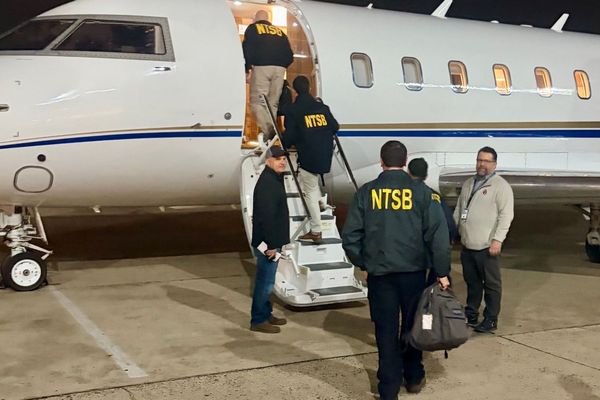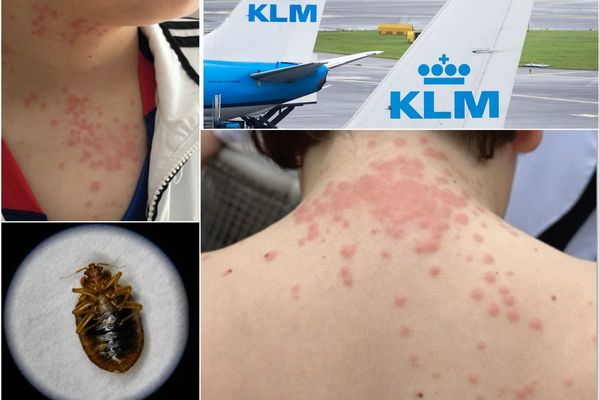
Pets on jets – it’s happening. From 16 October some owners will be allowed to take their furry friends on Virgin flights between Melbourne and Queensland.
In 2021, Australia’s air regulator, the Civil Aviation Safety Authority, changed its rules so that airlines no longer require its explicit permission to carry animals. While other airlines still require pets to travel in the cargo hold, Virgin has led the charge, now allowing them to ride topside, in the cabin. But the national first has raised a lot of questions – from where they will sit, allergies to who picks up the poo – so let’s go through the details.
Which pets will be allowed?
Virgin Australia has said the pets in cabin service will be “limited to small cats and dogs”.
The animal must go into an approved pet carrier, which must fit under the seat in front. Combined, they cannot weigh more than 8kg.
How much does it cost?
Travellers wanting their animal companions to join them will have to part with $149 to get those paws onboard. Bookings have to be made 72 hours before takeoff, and owners need to check their pets in with a guest services agent before the flight.
Sign up: AU Breaking News email
Can everyone take their pet?
No. The airline has specified there are some guests who are not allowed to take their pet. These include anyone under 18, people travelling alone with an infant, and anyone travelling with an assistance animal.
Do they go through screening?
Pets will have to be removed from their carrier to go through screening with their owner. There is also a dress code – harnesses and leads with a lot of metal studs? Forget it. Bark collars? Don’t bother. Pets should wear a basic collar or harness, avoiding elaborate clothing or equipment that could delay security processes, the airline has warned.
Where do they sit?
Only certain rows of seats on certain domestic flights will be eligible for pet owners wanting to use the service.
There is to be no sitting on laps, walking of pets down the aisles or taking them to the bathroom.
Is it safe?
For some, no. While the RSPCA welcomed the news, it warned owners of some breeds they should be cautious before flying with them.
“Some pets – such as brachycephalic [flat-faced] breeds like pugs or Persian cats – may be at higher risk of respiratory distress during flights,” a spokesperson for the RSPCA said.
“Others may struggle with the noise, confinement, or unfamiliar environments. We strongly encourage guardians to consult their veterinarian to assess their pet’s health and temperament before booking a flight.”
What about allergens?
On its pet page, Virgin explains the main sources of allergens from cats and dogs are “from direct contact with the animals, their saliva, and their dander”.
As the pet will remain in the carrier and aircraft is well ventilated from top to bottom, the risk of dander spreading in the cabin is reduced, the airline says.
“With the pet carrier being placed underneath a seat, dander will be carried out of floor-level vents and filtered out, rather than recirculated,” Virgin says.
“Therefore, for most guests, being seated a few rows away from pets will greatly reduce the likelihood of an allergen trigger occurring during the flight.”
What if the pet needs the bathroom?
Pets will go in their carriers and owners are encouraged to bring extra absorbent wipes and a plastic bag to clean it up once the pet is off the plane.
How should you prepare your pet for travel?
The RSPCA said owners ready to head high in the sky with their pets should be prepared.
“Guardians should ensure their pet is calm, well-socialised, and comfortable in their travel carrier,” a spokesperson said. “For many animals, the carrier itself can be a source of fear, so gradual, reward-based training is key to helping them feel safe and secure.
“RSPCA Australia encourages all pet guardians to begin carrier training early, using positive reinforcement and allowing pets to explore at their own pace. This not only improves the travel experience for pets but also ensures safety and comfort for everyone on board.”
How have pets fared in cabins overseas?
In many overseas jurisdictions pets have been able to be carried in cabins for a fee for some time, with everything from pigs, miniature horses and ducks spotted on flights in the past.
The US has long allowed people to fly with emotional support animals as long as airlines allow it. Passengers have tried to bring a diverse range of creatures on board over the years as they tested the parameters of the rules.
In 2018, a woman was prevented from bringing a peacock on board a United Airlines flight, despite its owner being willing to pay an additional fare.
But the scores of requests for unusual support animals eventually led the US transport department to ban all animals except dogs as service or emotional support animals in December 2020. Non-service animals can be taken on board in the US, with most airlines charging a fee and having limits for small pets only.
Some Middle Eastern airlines also allow falcons inside cabins and to have their own passports.







